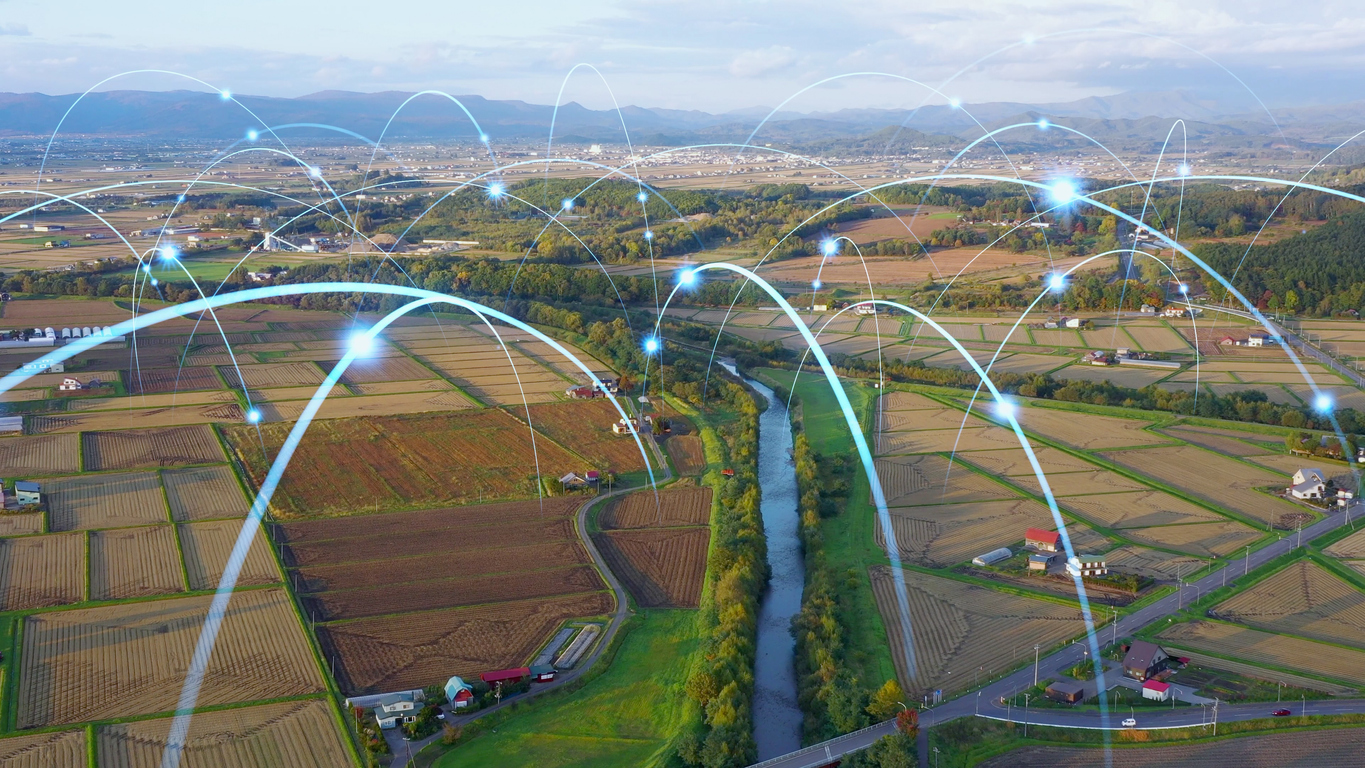In the era of rapid technological advancements, the fusion of Artificial Intelligence (AI) and the Internet of Things (IoT) has emerged as a game-changer in various industries. One sector that benefits immensely from this convergence is agriculture. The application of AI and IoT in farming practices has the potential to transform rural communities and create smart villages where sustainable agriculture and improved livelihoods go hand in hand.
In this article, we delve into the world of smart agriculture, exploring how AI and IoT technologies are reshaping traditional farming practices, with a focus on some notable brands that use the advantage of new technologies in this domain, including Seeed Studio, Brainboxes, Carlo Gavazzi, and Novotechnik.
New technologies in a Smart Village
“Smart village” is a modern, global strategy for off-grid communities. It is an initiative that is designed to improve the quality of life of rural communities. The idea behind this concept is to support global rural electrification policy makers, donors, and socioeconomic planners. With the help of technology, particularly AI and IoT, it is possible to revolutionise agriculture in these villages.
In contrast to the predominantly urban-centric focus of smart cities, smart villages recognise the unique challenges faced by rural areas and seek to bridge the digital divide. Smart villages strive to improve the general quality of life for rural residents, encourage sustainable agricultural practices, increase access to necessary services, and promote economic growth by integrating technology into different elements of village life.
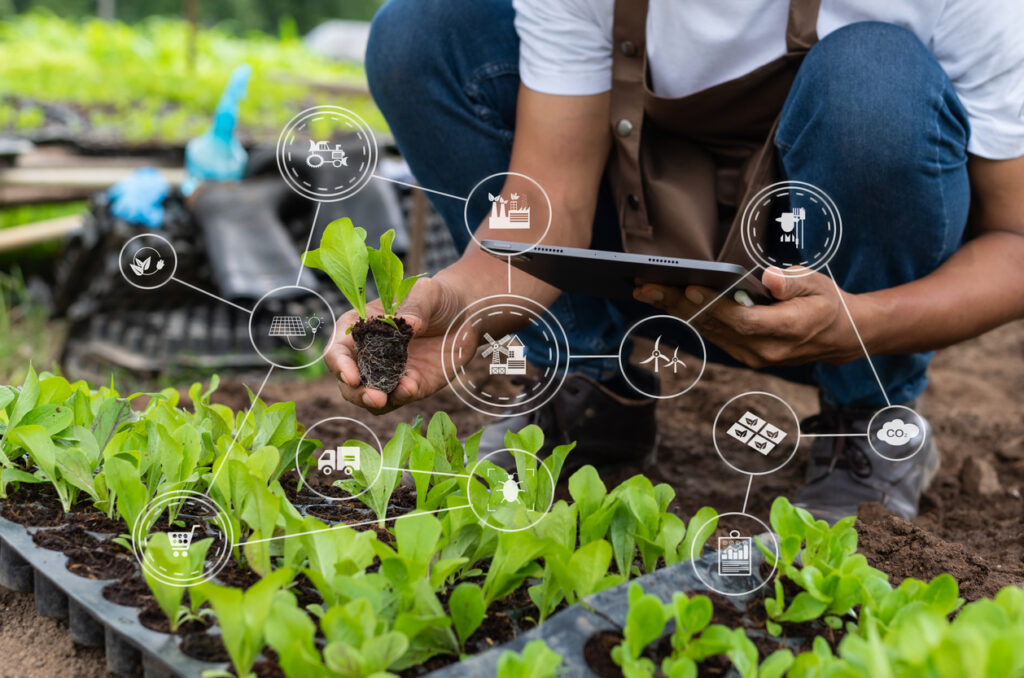
The integration of AI and IoT in agriculture within smart villages enables data-driven decision-making, precision farming techniques, efficient resource management, and enhanced productivity.
IoT Agriculture Solutions from Innovative Companies
Have a look at companies that have been involved in developing cutting-edge solutions that empower farmers and enable them to leverage AI and IoT in their agricultural operations. Through innovative products and solutions, these brands are paving the way for smarter, more efficient farming practices.
Digital Twin of Villages – Seeed Studio
Seeed Studio, a leading IoT hardware provider, has been instrumental in developing a wide range of sensor modules and connectivity solutions specifically designed for agriculture. Their products enable farmers to collect real-time data on soil moisture, temperature, and other vital parameters, facilitating better decision-making and resource optimisation.
By enhancing last-mile access and ensuring the right digital solutions reach people in need, the Smart Village model enables accelerated impact on multiple Sustainable Development Goals (SDGs) – such as health, commerce, education, and agriculture – through an integrated approach to digital development.
Seeed Studio
As the brand claims, the potential for villages to contribute significantly to economic progress is enormous since they are an essential component of the global society. To aid in the digitisation of these sectors, there are several chances to create a technology environment that is both affordable and effective. Seeed Studio aims to offer full-stack hardware and software solutions to better assist villages and handle SDG (Sustainable Development Goals) concerns.
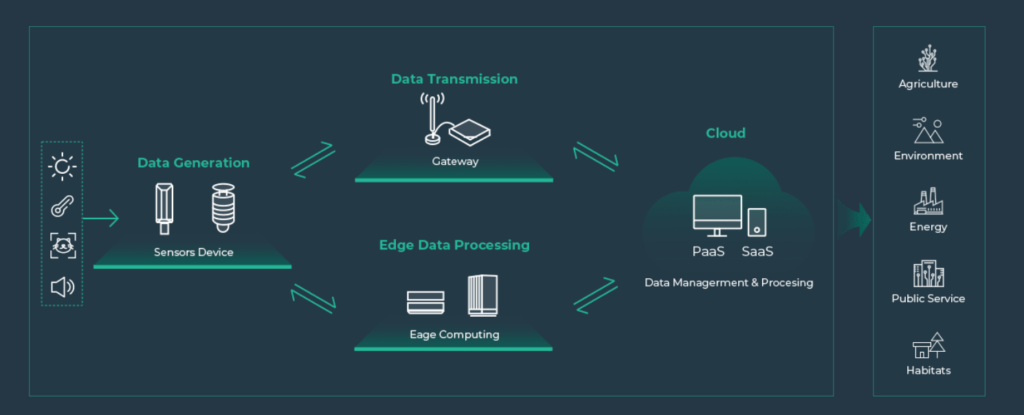
Seeed Studio’s SenseCAP products are widely tested and implemented in agricultural applications. This series is suitable for outdoor remote sensing situations such as smart farming, smart cities, and other IoT applications that require low-power, long-distance, long-term data collecting since it is enclosed in an IP66 casing.
An example of a sensor that has been used in agriculture is the SenseCAP LoRaWAN S2103 sensor which measures CO2 emission, temperature, and humidity in the atmosphere in the ranges of 400 to 10000 ppm, -40°C to 85°C, and 0 to 100% RH (non-condensing). Its built-in Bluetooth and OTA optimisation make speedy setup and updates possible. This sensor has stability, reliability, and can cover a vast transmission range while using less power thanks to LoRa and an IP66 construction. S2103 is ideal for industrial environmental sensing scenarios to support the UN Sustainable Development Goals.
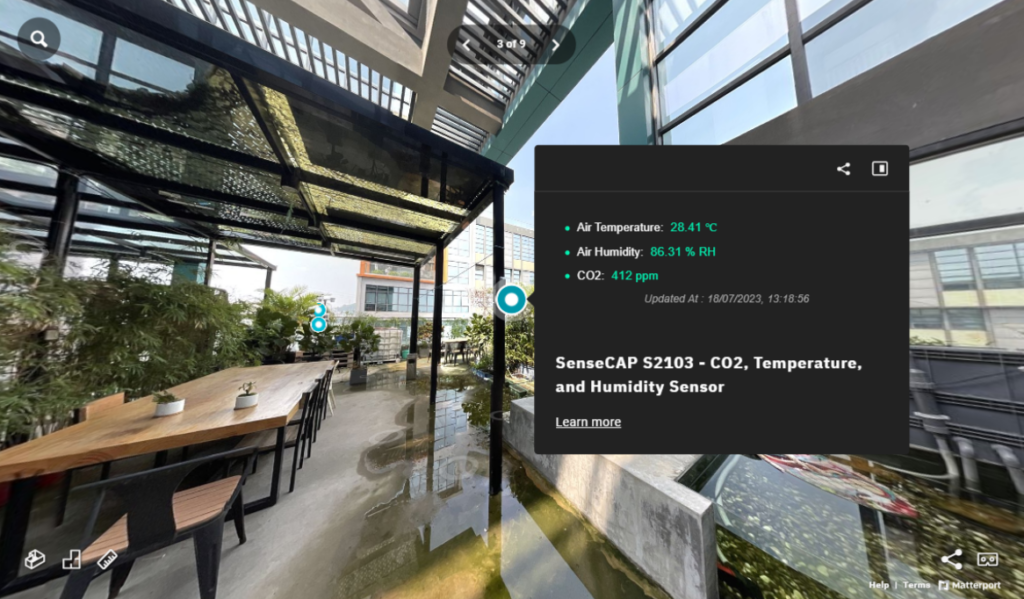
Additionally, Seeed Studio offers SX1302 indoor gateway and a J3010 edge-computing device which can help with the implementation of smart farming solutions and provide a stable and reliable data flow between IoT devices in agricultural environments.
To easier manage SenseCAP devices, find out more about the SenseCAP portal here.
Mechanical Weed Control – Brainboxes
As a specialist in IoT, Brainboxes provides strong and dependable connectivity solutions that provide seamless data transfer between IoT devices in agricultural environments. Their solutions guarantee continuous data flow, giving farmers precise and timely information for effective farm management.
An example of the use of Brainboxes products for agricultural purposes is Austrian brand, Ensio which uses Brainboxes ED-549, ED-588 converters as part of their OKIO System. It is a guidance system for cultivators for mechanical weed control. Brainboxes devices regulate the pitch and angle of the machinery as well as the use of the system’s wider automatic calibration. This consists of equipment like cameras, hydraulic actuators, and other accessories important to the machinery’s efficient operation.
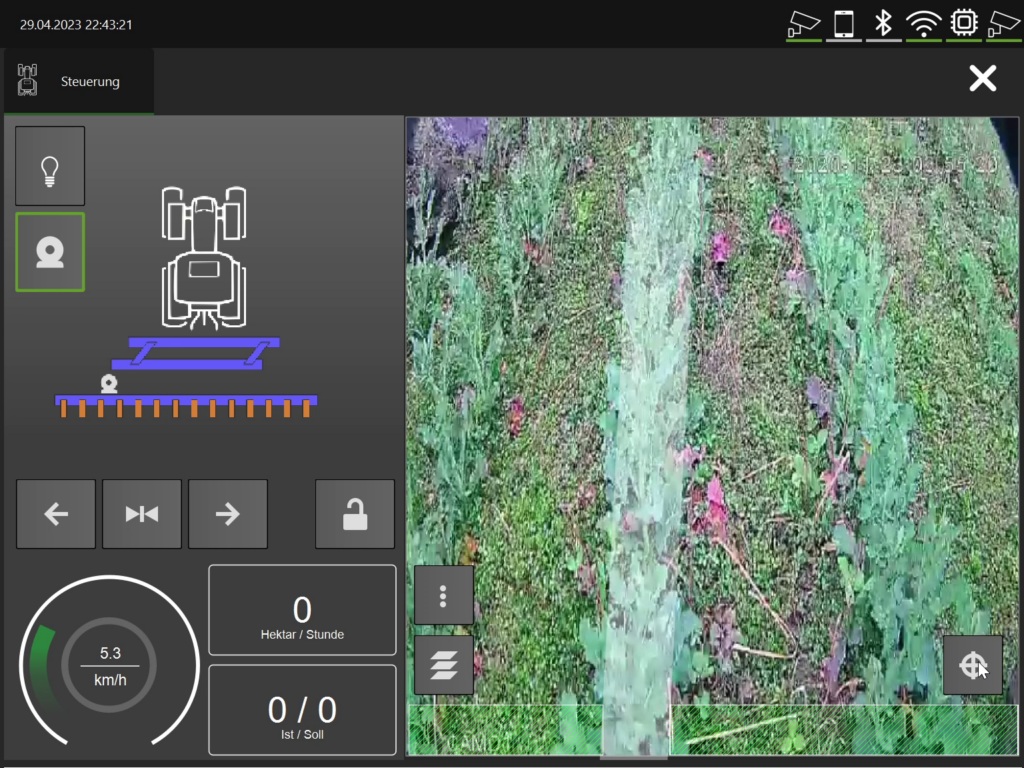
Ensio has provided a video of the system in use, which is available to watch here or you can read more about Brainboxes modules and how they work in harsh environments in this article.
Smart Farming with Carlo Gavazzi
A reputable brand in automation and energy management, Carlo Gavazzi has created cutting-edge control systems and monitoring tools specifically for the agricultural industry. To manage energy consumption, improve overall farm output, and optimise irrigation practices, their products blend AI and IoT capabilities.
Carlo Gavazzi’s smart farming solutions cover:
- Sensors for feeding systems, from capacitive sensors that monitor levels of seeds and grain in feeding systems, and monitor the refilling process to photoelectric sensors which ensure maximum performance and resistance in these harsh environments.
- Components for harvesting machinery, like inductive proximity sensors, which are employed for non-contact measurements, for example to count axle revolutions in machinery or tracking the bucket position in a backhoe loader. Also capacitive level sensors, mounted on sprayers with plastic tanks attached outside, enable detection of compounds presence with a water base while ignoring froth, film, or buildup.
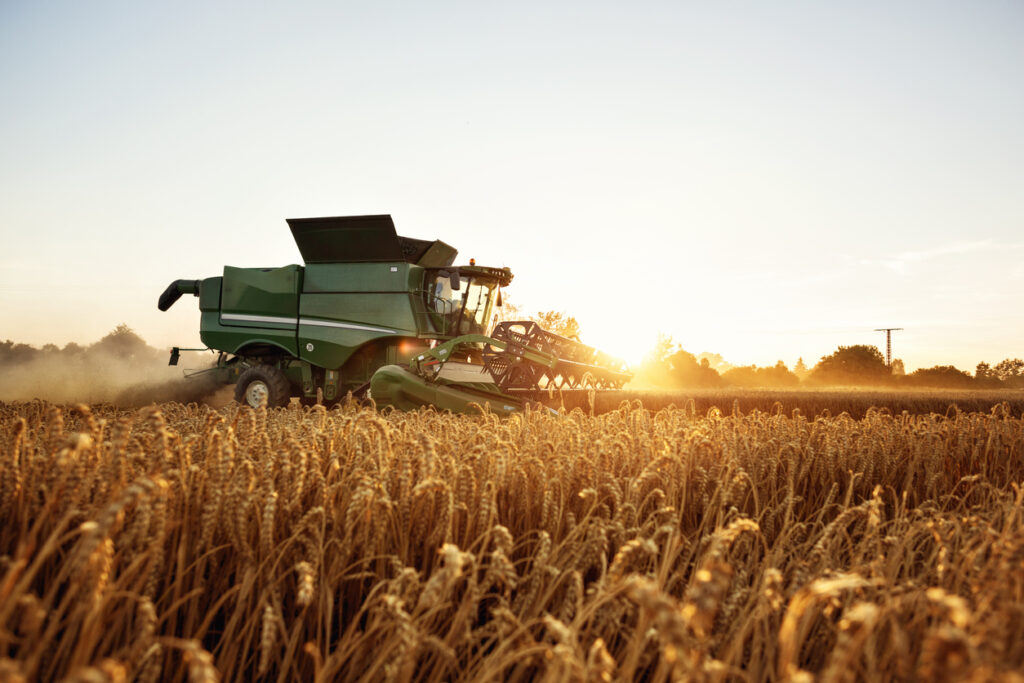
- Level measurements of liquids and solids, the CA30 series of capacitive proximity sensors is a perfect range for measuring the level of liquids and solids in both huge seed silos and tiny storage containers. These sensors are made to detect dry grain accurately. The CA30 series delivers a steady and accurate indication of the yield per unit area.
Sensors for Smart Agriculture – Novotechnik
Novotechnik, a leader in sensor technology, has contributed to the advancement of precision farming with its high-precision sensors for measuring various parameters like distance, angle, and position. These sensors, integrated with AI and IoT systems, enable farmers to make precise decisions based on real-time data, resulting in improved crop yield and resource efficiency.
In its offer, there are sensors for industry specific applications such as RFC 4800 angle sensors. RFC 4800 line offers better hydraulic control, improved sealing and is applicable for mobile applications. Another range, the RFD 4000 touchless sensors, is designed for machine and plant construction, pedals, steering or tool building. These sensors are perfect for precise measurement of the mower arms when they are lowered, elevated, or locked into place. The RFD 4000 series has strong shock and vibration endurance, a temperature range of -40 to +125°C, and sealing to IP69K. They are perfect for uses where ongoing exposure to the weather is anticipated.
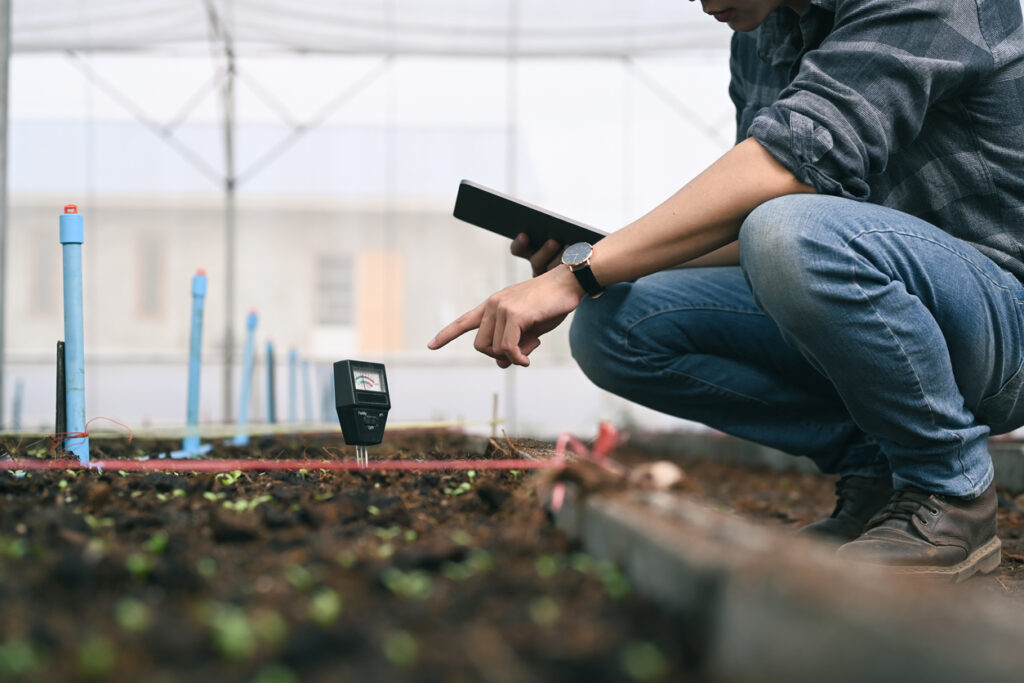
Another application of Novotechnik sensors in the agricultural industry is for the purpose of accurate monitoring and adjusting thanks to the vision and control system. A good example is the usage of a TX2 position sensor in onion processing equipment. Manufacturers could autonomously clip the top and bottom of onions using the TX2 sensor. The TX2 uses its integrated vision and control system which helps the manufacturer adjust the height automatically without the need to do it manually.
The future of smart villages
The concept of a smart village is not without its challenges; however, the opportunities for growth and positive impact are undeniably significant. As the agricultural industry remains one of the largest and most vital sectors globally, the adoption of smart technologies in rural communities can revolutionise farming practices, fostering efficiency and sustainability.
By embracing innovative products from forward-thinking companies like Seeed Studio, Brainboxes, Carlo Gavazzi, and Novotechnik, rural communities can build a better and more sustainable future. These technologically advanced solutions empower farmers to make data-driven decisions, optimise resource utilisation, and elevate agricultural productivity. Embracing this transformative approach not only enhances life within smart villages but also contributes to the advancement of a more interconnected and prosperous global agricultural landscape.





